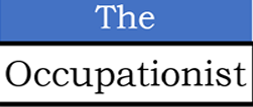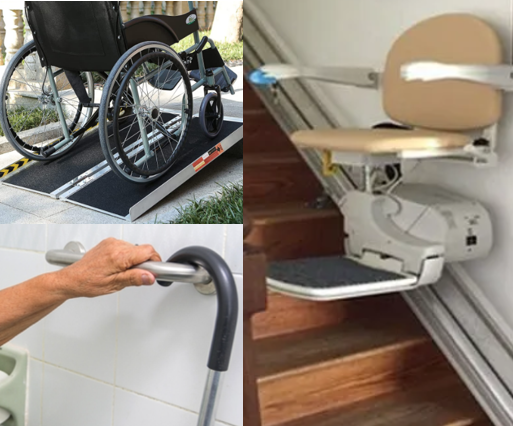If you have arthritis, a bone joint disability, or any other medical condition that restricts your mobility (movements), and if your workplace is safe for you, it is disability-friendly.
Is your workplace designed to make you move freely so that the chances of your tripping and falling are minimized to ALARP (as low as reasonably practicable). Can a worker on a wheelchair come to the workplace? If yes, your workplace is disability-friendly.
There could be employees who have medical conditions that limit their mobility and not having the workplace designed to make them comfortable signals poor ergonomics and a disregard to employees’ concerns.
There are many other things, some ergonomics as well, that go into making workers comfortable at work, more so for the worker with mobility issues.
Even if there is just one worker, modifications should be made. In fact, workplaces should be such that just anyone, disability or no, must be able to work without fear of developing a work-related illness or getting injured due to trips and falls due to the environment in which he/she works.
Disability can happen to anyone – a worker today can get involved in some injury (at work or out of work) and become a person with disability, which may last for a few weeks.
A few things that can benefit all, more so to people with disability, are to have ramps at places, a bar handle in the toilet, a staircase chair etc.
In India there are around 27 million people who have physical or mental disability making up for 2.2% of India’s population. It is disheartening to see hardly any public place or office friendly to their requirements.
A good employer should make reasonable adjustments and redesign the workplace to ensure workers with disability are able to move freely. Management should also ensure that person with disability doesn’t face discrimination or barriers. A person with disability should be a part of every function or meeting like any other employee.
Ensuring good working conditions involves the following:
- Sharing good work practices with employees
- How: Arrange a Townhall (meeting) and address the issue
- Example: Taking frequent breaks while working
- Benefits: Less fatigue and musculoskeletal problems at the end of the day
- Walkthrough rounds in the workplace
- How: Senior managers form teams and walks through the workplace along with the team members periodically to observe if work, workplace and working conditions are in accordance with good practices
- Example: During a walkthrough in a workshop, it is observed that the place is stuffy
- Benefits: Identify deficiencies and take remedial actions
- Training
- How: Train employees in safe working
- Example: Manual handling training for those whose job involves lifting heavy weights
- Benefits: Employee doesn’t get backache issues
- Investing in things that makes working efficient
- How: By making the work (job) the equipment and the workplace fit the worker (ergonomics)
- Example: Use of monitors, keyboard and mouse instead of working with laptops
- Benefits: Less fatigue and musculoskeletal problems at the end of the day, both long term and short term
- Respecting each other
- How: Be kind and polite in your conversations, especially arguments. Do not belittle or make fun of others, especially those who are sick due to a chronic disease or have disability
- Example: Have out-of-work chats occasionally (about family, hobbies etc.)
- Benefits: Develops trust and a great team
- Walk-the talk
- How: Encourage respectful speak-up culture
- Example: No victimization of those who speak up respectfully
- Benefits: Freedom to think, work, innovate etc.
Some basic ergonomics steps that can make all workers (including those with disability) and the work efficient:
- Encourage workers to take frequent breaks
- A short break of even one minute can refresh you to continue your task efficiently
- Work in a neutral position
- Keeping your arm close to the body is neutral position. Working in this position does not fatigue you as much as keeping your arm away from the body
- Keep regularly used materials within easy reach
- It reduces fatigue as you are not overstretching to search frequently required materials
- Discourage use of excessive force
- Using a trolley instead of shifting a heavy box manually reduces incidence of backache
- Work at a proper level
- Not working at a proper level causes muscles to strain and cause early fatigue leading to performance issues
- If job requires repetitive movements, take a break
- Taking a break in jobs involving hammering, shifting packages or even working with computers breaks the monotony of the job as well as provides rest from repetitive tasks
- Work in adequately-spaced areas
- Have enough elbow space and legroom to work with a clear view to prevent accidents
- Move often and stretch yourself
- Sitting or standing for too long isn’t good. If sitting for long, stand and move around and stretch. If standing for long, sit, relax and stretch.
- Minimize stressors at workplace
- Heat, light, glare, noise etc. are stressors which cause discomfort and distraction during work and additionally cause illnesses
As mentioned above, there are lot of areas where an Occupational Health (OH) physician can sensitize the management as some issues have potential to even cause mental health problems in vulnerable employees.
The OH physician should listen to employees who come for consultations and say that they have ‘a feeling of being uncomfortable at workplace due to some people around’ and proactively bring it to the attention of management. The HR (Human Resources) department should be involved after employee consent. Usually, the management will address such issues in appropriate forums.
Many offices have areas that are difficult to navigate even for people without disability. During walkthrough rounds these could be identified and improvements made to benefit all. During consultations with the OH physicians, employees may also talk about these difficult-to-navigate areas.
Although making the workplace safe to work so that no one develops any work-related illness or gets injured is a responsibility of all, employees should interact with OH physician, an Ergonomist as well as with Safety professionals to achieve this goal.
To know more contact
____________________________________________________________________________________________
Dr Ajay Sati is an Occupational Health physician who prefers to describe himself as an Occupationist, to denote, ‘an expert in diseases and other concerns of occupations’. Dr Sati has managed health and wellness programs in industries he worked, like the atomic energy, and energy (oil & gas) in India and overseas. An experienced virtual consultation expert he was involved in many greenfield and brownfield projects providing inputs from health point of view.



